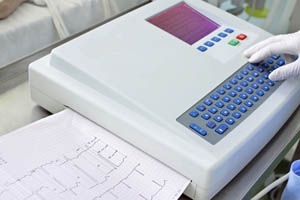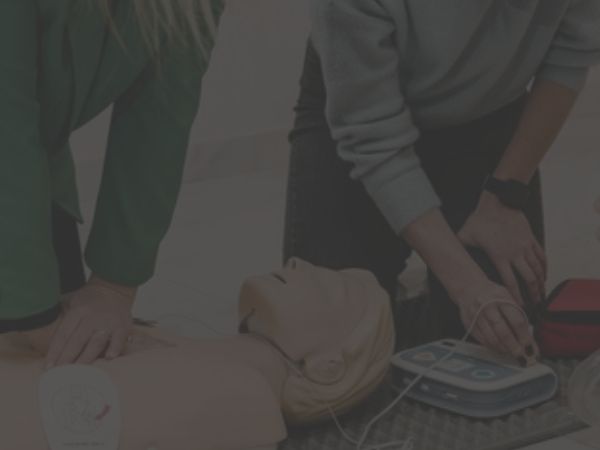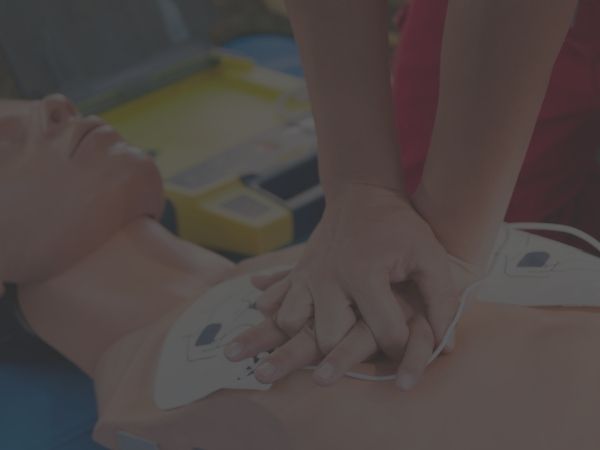Your cart is currently empty!
The Value of Taking an ACLS Pretest
Obtaining an Advanced Cardiac Life Support (ACLS) certification is essential for health care providers working in critical care. In the U.S., less than 20 percent of hospitalized patients that suffer cardiac arrest survived through discharge, reports Medscape.com. Unfortunately, this problem may not be the result of poor continuity of care, but it may have roots in mistakes made when providing basic life support (BLS) or ACLS. Therefore, taking an ACLS pretest to evaluate your skills, which should align with International Liaison Committee on Resuscitation (ILCOR) Recommendations, could help save a life.
An ACLS Pretest May Reveal Inconsistencies or Errors in Providing Care
 Recent studies are unavailable for exact figures on the number of errors made in providing ACLS in health care facilities. A 2007 study, reports the Patient Safety Network, found a longer-than-necessary stop in chest compressions, even for as little as seconds more than recommended, increased mortality rates in individuals suffering from ventricular fibrillation (V-Fib).
Recent studies are unavailable for exact figures on the number of errors made in providing ACLS in health care facilities. A 2007 study, reports the Patient Safety Network, found a longer-than-necessary stop in chest compressions, even for as little as seconds more than recommended, increased mortality rates in individuals suffering from ventricular fibrillation (V-Fib).
Common mistakes made in performing CPR and ACLS include slow chest compressions, shallow compression depth, hyperventilation, delivery of electrical shocks for non-shockable rhythms, long pauses in CPR before administering shocks, and lack of an advanced airway.
The Cause of ACLS Mistakes
The exact cause of ACLS mistakes varies by facility. Staff members may not know their assigned roles in providing emergency cardiovascular care (ECC), or medical equipment may be difficult to access and use.
Depending on the facility, defibrillators may be located out of reach, such as located in a locked medication room or crash cart, and a simple mistake in entering the lock-out code or not having the cart fully charged could result in unnecessary delays in providing care. This still does not consider the most-believed cause of ACLS mistakes–timing of training.
ACLS training and certification is typically valid for a period of two years–a standard recertification guideline for comparable courses, such as Pediatric Advanced Life Support (PALS)–explains the Houston Chronicle. However, health care providers working in facilities may not necessarily be involved in providing ACLS frequently unless working in critical care. How does this happen?
The answer lies in health care providers that obtain certification, who go on to work in non-critical care areas. If an opening in critical care occurs, the staff member may work in the ICU or other critical care setting temporarily. Unfortunately, the person in this example may have not practiced ACLS skills since certification. Imagine the level of competency possible if ACLS renewal is only months away.
In other words, the person may not recall all facts and steps necessary in providing quality ACLS. As a result, some facilities are evolving ACLS renewal policies to require staff members to complete competency evaluations or participate in skills’ fairs to review steps and increase responsiveness in event of a cardiac emergency. In a sense, these skills’ fairs are a form of an ACLS pretest, giving staff an opportunity to identify their weaknesses and complete retraining, if necessary.
The Most Common Mistakes Made in Performing ACLS
 The most common ACLS mistakes can be broken into two categories, including those that involve poor timing and those involving a lack of knowledge. Some of these mistakes include:
The most common ACLS mistakes can be broken into two categories, including those that involve poor timing and those involving a lack of knowledge. Some of these mistakes include:
Poor Timing Mistakes
- Pausing chest compressions for too long when preparing to administer electrical shocks.
- Not recognizing cardiac emergencies in a timely manner. Although some emergencies can be readily identified by conscious patients, like vocally expressing severe chest pain, others may not be evident without an electrocardiogram (EKG). Moreover, facilities that use monitor technicians may experience a higher rate of mortality due to errors made in notifying care staff of potential arrhythmias. As a result, floor staff is unable to begin ACLS in a timely manner to increase survival rates.
Lack of Knowledge Mistakes
Not understanding if an airway is considered an advanced airway, such as mistaking a Laryngeal mask airway (LMA) for an advanced airway. When taking the NHCPS pretest to evaluate ACLS skills, up to 32 percent of participants incorrectly selected this mistake.- Not knowing the basic components of the BLS survey. Up to 41 percent of NHCPS participants chose the incorrect answer when seeing responses that effectively spell out the acronym, ABCD, assuming it revolves solely on the steps in performing CPR, such as air. It does not. The correct answer would include, at a minimum, activating EMS and checking circulation, not necessarily in that order. Can you name the correct steps in the BLS survey off the top of your mind? If so, which two steps are missing from the bolded list?
- Not understanding the components of the ACLS survey. The ACLS survey question also found a common thread of error in selecting a series of steps that involve an ABCD acronym. In life support, acronyms are useful for committing key points to memory. However, the pretest statistics and evidence from the Medscape study suggest staff members may be getting confused easier with acronyms. In the ACLS survey, more participants selected the incorrect answer than the correct answer when presented with a series of steps, two of which contained an ABCD acronym.
- Failure to recognize arrhythmias in an EKG. This mistake is the result in misinterpretation of EKG results. Although V-Fib is easily recognized, some machines may still indicate some electrical activity even in asystole. However, a trained health care giver should understand the difference and recognize when V-Fib, which is a shockable rhythm, is present in comparison to asystole or even atrial fibrillation (A-Fib). While A-Fib and V-Fib are both heart conditions involving an irregular heartbeat and, oftentimes, a sudden drop in blood pressure, A-Fib differs from V-Fib in that it is a non-shockable rhythm. Also, inexperience in reading an EKG may result in incorrectly assessing the QRS complex or noting pre-ventricular contractions (PVCs) as a diminished QRS complex.
- Incorrectly administering medications in ACLS. Nurses and ACLS-certified individuals may mistakenly administer the incorrect medication for a given type of arrhythmia. For instance, nurses may incorrectly administer epinephrine more often than necessary. According to the AHAJournals.org, epinephrine can should only be administered in 1-mg doses every three to five minutes, during cardiac arrest, and higher-than-standard doses of epinephrine are not effective in increasing survival rates. Meanwhile, amiodarone administration for cardiac arrest that has not responded yet should be tapered down in the second dose to 150 mg in subsequent doses.
- Failure to flush lines immediately after medication administration, which may result in inconsistencies in medication delivery. This would result in a higher-than-normal dose and could impact the effect of ACLS, as well as medication effectiveness in converting arrhythmias.
- Spending too much time on establishing a venous access. Spending too much time establishing venous access is another common mistake in ACLS. While one staff member may be able to establish access during CPR, it is important to not sacrifice quality of CPR for establishing an access. In other words, this part of ACLS certification may go back to checking the quality of venous access throughout the shift, ensuring venous access is available if cardiac arrest occurs.
Evaluate Your ACLS Skills Now
When was the last time you participated in a code blue requiring ACLS? If it has been more than three months, you could already be losing your skills. Instead of waiting around until your next ACLS renewal, or searching for availability at a distant training center, consider evaluating your knowledge with our free ACLS practice test that is easy-to-use and offered entirely online. This Advanced Life Support (ACLS) precourse assessment includes a series of multiple choice questions and answers designed in order to prepare you to save a life in an emergency. It is not too late to learn what you might miss and improve your ability to provide life-saving care to someone in cardiac arrest.
Did we miss a mistake you’ve seen happen in performing ACLS? Join the conversation by sharing this article to your social media, and if you’d like to get an upper-hand in understanding ACLS, consider renewing your credentials now.










Leave a Reply